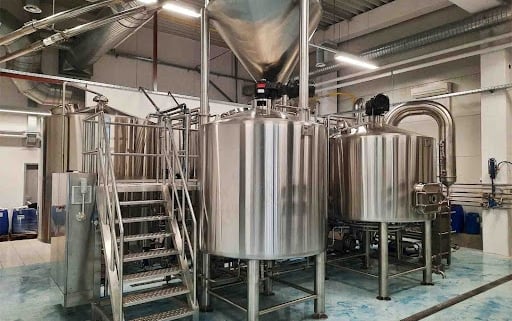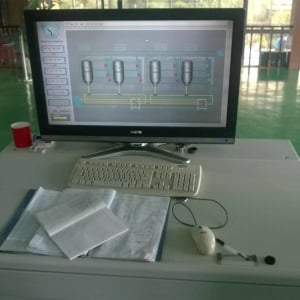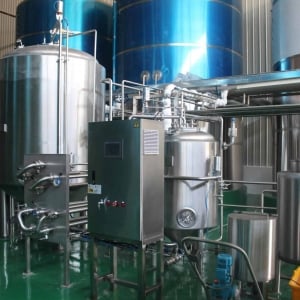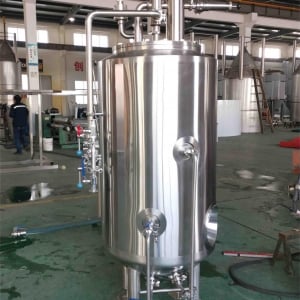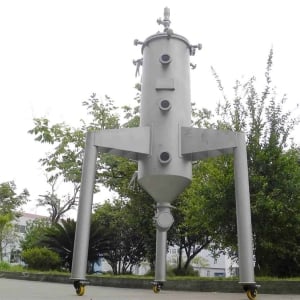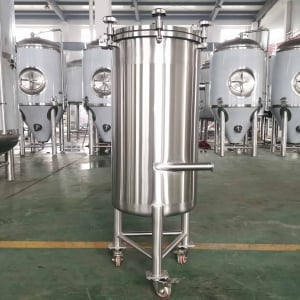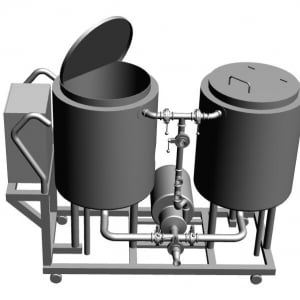5 bbl fermenter
The journey from wort to a delicious craft beer involves a crucial step – fermentation. This is where yeast transforms the wort, a sugary liquid extracted from malted grains, into beer. And for craft brewers who have graduated from small-batch setups, a 5 BBL fermenter is a substantial upgrade that unlocks a new level of production.
In this comprehensive guide, we’ll delve into the world of 5 BBL fermenters, exploring everything you need to know: what they are, their features, how they operate within the brewing process, and the nitty-gritty details like choosing the right supplier, installation, and maintenance.
So, whether you’re a seasoned brewer looking to expand your operation or an ambitious home brewer yearning to take the next step, this guide will equip you with the knowledge to make informed decisions about 5 BBL fermenters.
What is a 5 BBL Fermenter?
A 5 BBL fermenter is a large vessel specifically designed to house beer wort during the fermentation process. The designation “5 BBL” refers to the volume it can hold – 5 US Barrels, which translates to roughly 625 liters or 165 gallons.
These fermenters are workhorses in the craft brewing world, ideal for breweries producing moderate volumes. They offer a significant increase in production capacity compared to smaller setups, allowing brewers to create larger batches and scale their operations.
Features of 5 BBL Fermenters
5 BBL fermenters come equipped with a range of features that optimize the fermentation process and ensure brewers have the necessary controls:
- Material: Sanitary stainless steel (typically 304 stainless steel) is the industry standard for 5 BBL fermenters. This material is durable, corrosion-resistant, and easy to clean, promoting hygiene and preventing contamination throughout the brewing process.
- Capacity: As mentioned earlier, these fermenters hold 5 US Barrels (625 liters or 165 gallons) of wort.
- Jacketing: Many 5 BBL fermenters come with a jacket, which is a space between the inner and outer walls of the tank. This jacket can be filled with a coolant like glycol, allowing for precise temperature control during fermentation. This is essential, as different yeast strains thrive at specific temperatures.
- Conical Bottom: A conical bottom design is a popular feature in 5 BBL fermenters. The cone slopes towards a central outlet, allowing for easier collection of sediment (called trub) that accumulates during fermentation. This trub can negatively impact the final flavor of the beer, so its efficient removal is crucial.
- Manway: A manway, or a large hatch on the top of the fermenter, provides brewers with access for cleaning, inspection, and adding ingredients during fermentation.
- Valves and Fittings: 5 BBL fermenters are equipped with various valves and fittings that enable brewers to transfer wort, collect samples, and control pressure within the tank.
- Monitoring Systems: Some advanced models may include temperature gauges, pressure gauges, and even carbonation stones for precise monitoring and control of the fermentation process.
These features all work together to create an efficient and controlled environment for fermenting wort and transforming it into high-quality beer.
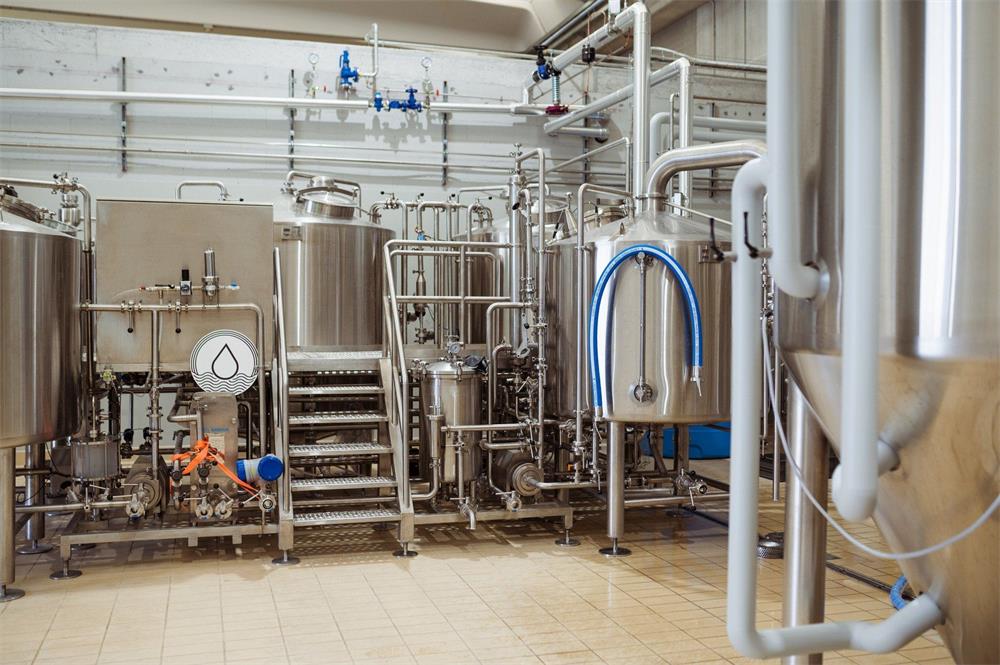
The Brewing Process with 5 BBL Fermenters
Once the wort is brewed and separated from the grain, it’s transferred to the 5 BBL fermenter. Here’s a simplified breakdown of the steps that follow:
- Aeration: Yeast needs oxygen to survive and reproduce in the initial stages of fermentation. Therefore, brewers may introduce a measured amount of oxygen into the wort before pitching the yeast.
- Pitching Yeast: Yeast is the magic ingredient that converts the sugars in the wort into alcohol and carbon dioxide. The chosen yeast strain is added (pitched) to the wort at this stage.
- Fermentation: The yeast gets to work, consuming the wort’s sugars and producing alcohol and CO2. This process can take several days, depending on the yeast strain, wort composition, and fermentation temperature.
- Conditioning: Once fermentation is complete, the beer enters a conditioning phase, where it matures and develops its final flavor profile. This may involve additional time in the fermenter or transferring the beer to conditioning tanks.
- Packaging: After conditioning, the beer is finally ready for packaging, whether it’s kegs, bottles, or cans.
Choosing the Right 5 BBL Fermenter: A Guide to Capacity, Space, Design, and Customization
Selecting the ideal 5 BBL fermenter for your brewery requires careful consideration of several factors:
Capacity:
While all 5 BBL fermenters hold roughly the same volume of wort (around 625 liters), there can be variations in usable capacity. Some factors that affect usable capacity include:
- Headspace: This refers to the empty space at the top of the fermenter. It’s crucial to leave adequate headspace to allow for krausen (the foamy head that forms during fermentation) and to prevent overflow. Headspace typically ranges from 10% to 25% of the total tank volume.
- Working Capacity: This is the actual volume of wort you can ferment in the tank after accounting for headspace. For example, a 5 BBL fermenter with a 20% headspace would have a working capacity of around 500 liters (132 gallons).
Space:
Brewery space is a precious commodity, so consider the fermenter’s footprint and height before you buy.
- Footprint: The fermenter’s diameter and the space it occupies on the brewery floor.
- Height: Ensure there’s sufficient headroom to access the manway and accommodate any future expansion plans that might involve stacking fermenters.
Design:
Here are some design elements to consider when choosing a 5 BBL fermenter:
- Conical vs. Cylindrical: As mentioned earlier, conical fermenters are popular due to the ease of collecting trub. Cylindrical fermenters, however, may be slightly less expensive and easier to clean.
- Jacketed vs. Unjacketed: Jacketed fermenters offer precise temperature control, a significant advantage for brewers creating lagers and other styles that require specific fermentation temperatures. Unjacketed fermenters are a more budget-friendly option, but temperature control may be more challenging.
- Number of Fermenters: Consider how many fermenters you’ll need to meet your production goals. You might choose to buy several smaller fermenters or a few larger ones, depending on your space constraints and batch sizes.
Customization:
Some manufacturers offer customization options for 5 BBL fermenters, allowing you to tailor the equipment to your specific needs. These may include:
- Glycol Inlet/Outlet Ports: The size and location of these ports will depend on your existing glycol chilling system.
- Sample Valves: Placement and type of sample valves can impact ease of use during fermentation.
- Additional Ports: You may opt for additional ports for instrumentation, CIP (Cleaning In Place) systems, or dry hopping.
Suppliers and Price Range of 5 BBL Fermenters
The cost of a 5 BBL fermenter varies depending on several factors, including:
- Brand and Reputation: Established brands with a proven track record may command a premium price.
- Features: Jacketed fermenters, advanced monitoring systems, and exotic materials will all increase the price tag.
- Customization: Any customizations you choose will add to the overall cost.
Here’s a ballpark range for the price of 5 BBL fermenters:
- Basic Unjacketed Fermenters: $2,500 – $4,000
- Jacketed Fermenters: $6,000 – $8,000
- Advanced Jacketed Fermenters with extensive features and customization: $8,000 and above
Installation, Operation, and Maintenance of 5 BBL Fermenters
Once you’ve chosen the perfect 5 BBL fermenter, it’s time for installation, operation, and proper maintenance:
Installation:
- Planning and Permits: Depending on your location, you may need permits or inspections before installing your fermenter. It’s wise to consult with local authorities beforehand.
- Location: Choose a designated spot in your brewery that meets space requirements and offers easy access for operation and maintenance.
- Foundation: Ensure the floor can support the weight of a full fermenter (approximately 6,000 lbs for a full 5 BBL fermenter).
- Utility Connections: Connect the fermenter to your glycol system (if jacketed), water supply, and drainage system.
Operation:
- Pre-fill Cleaning: Always thoroughly clean and sanitize the fermenter before each use to prevent contamination.
- Wort Transfer: Transfer the wort from the brew kettle to the fermenter.
- Temperature Control: Monitor and adjust the fermentation temperature as needed, especially for jacketed fermenters.
- Monitoring: Regularly monitor the fermentation process, including gravity readings and CO2 production.
- Dry Hopping (Optional): Some beers benefit from the addition of hops during fermentation for enhanced aroma and flavor. This process, called dry hopping, involves adding hops to the fermenter at a specific stage.
- Transferring to Conditioning Tank (Optional): After fermentation is complete, the beer may be transferred to a conditioning tank for further aging and maturation.
Maintenance:
- Post-fermentation Cleaning: Meticulously clean and sanitize the fermenter after each use to remove yeast and beer residue. This helps prevent contamination and ensures optimal performance in future batches.
- Regular Inspection: Routinely inspect the fermenter for leaks, damage, or malfunctioning components.
- Preventative Maintenance: Schedule preventative maintenance for your fermenter, which may involve replacing gaskets, seals, and lubricating moving parts.
How to Choose a 5 BBL Fermenter Supplier
Selecting the right supplier for your 5 BBL fermenter is crucial. Here are some factors to consider:
- Reputation and Experience: Choose a reputable supplier with a proven track record in manufacturing high-quality fermenters.
- Product Range: Look for a supplier that offers a variety of 5 BBL fermenter options to suit your specific needs and budget.
- Customization Options: If customization is important to you, choose a supplier that offers the modifications you require.
- Customer Service: Ensure the supplier has a responsive and knowledgeable customer service team to assist you with any questions or issues that may arise.
- Warranty: Compare the warranty terms offered by different suppliers. A longer warranty indicates the manufacturer’s confidence in the quality of their product.
5 BBL Fermenters: Pros and Cons
Pros:
- Increased Production Capacity: Compared to smaller fermenters, 5 BBL fermenters allow you to produce larger batches of beer, scaling up your brewing operation.
- Greater Efficiency: With a larger volume, you can potentially brew less frequently, optimizing your brewing time and efficiency.
- Versatility: 5 BBL fermenters can accommodate a wide range of beer styles, making them suitable for various brewing endeavors.
- Durability: These fermenters are built to last, constructed from high-quality materials to withstand the rigors of commercial brewing.
Cons:
- Higher Investment: 5 BBL fermenters represent a significant investment compared to smaller setups.
- Space Requirements: These fermenters are not small, so ensure you have adequate space in your brewery to accommodate them.
- Complexity: Operating a 5 BBL fermenter may involve more complex procedures compared to simpler setups.
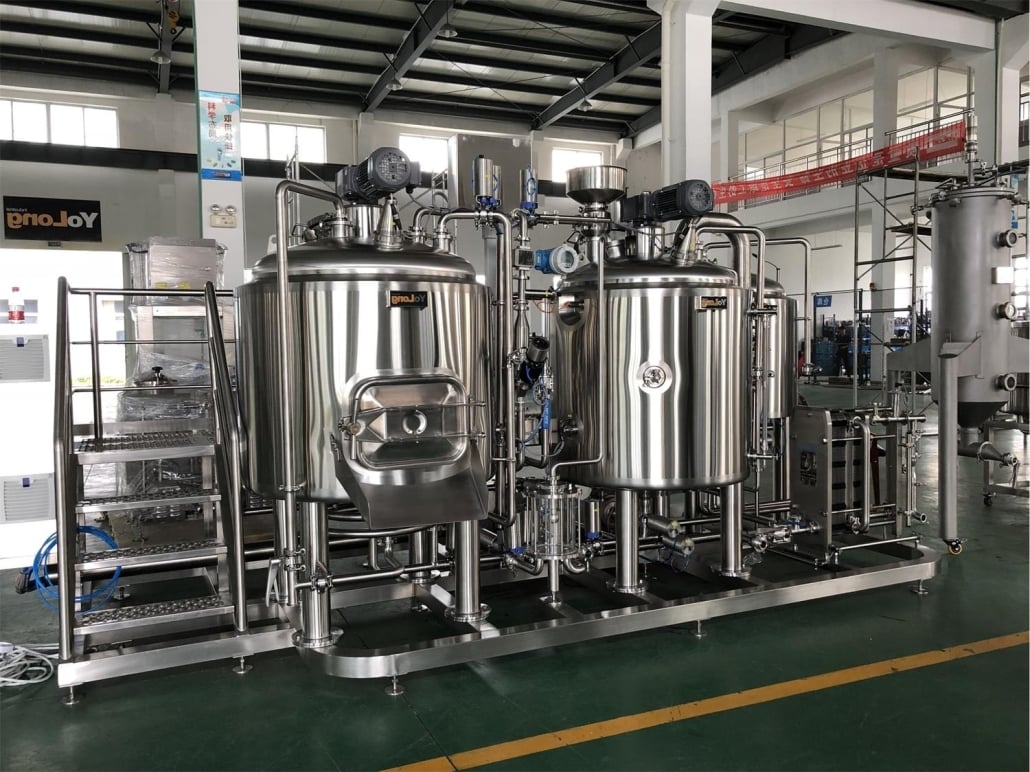
FAQ
Q: What is the difference between a jacketed and unjacketed 5 BBL fermenter?
A: Jacketed fermenters have a double wall with a space in between that can be filled with a coolant like glycol. This allows for precise control of the fermentation temperature, which is crucial for some beer styles. Unjacketed fermenters do not have this feature, making temperature control more challenging.
Q: How many 5 BBL fermenters do I need?
A: The number of fermenters you’ll need depends on your production goals, batch sizes, and desired brewing frequency. Consider how many batches you want to brew simultaneously and how long your fermentation cycles typically last.
Q: Can I customize a 5 BBL fermenter?
A: Yes, some suppliers offer customization options for 5 BBL fermenters. This may include the placement of ports, the type of valves, and even the addition of features like CIP systems.
Q: How do I clean and maintain a 5 BBL fermenter?
A: Proper cleaning and maintenance are essential for a 5 BBL fermenter. Always thoroughly clean and sanitize the fermenter after each use to prevent contamination. This involves using a cleaning solution and hot water, followed by a sanitizing rinse. Regularly inspect the fermenter for leaks or damage, and schedule preventative maintenance to ensure optimal performance.

